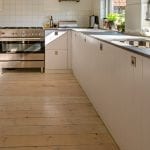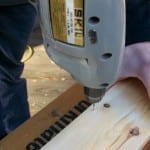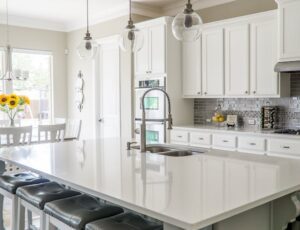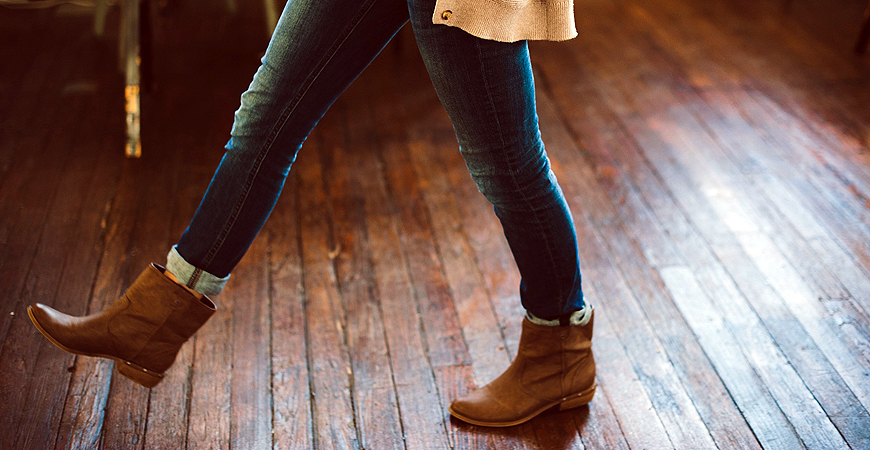
Top DIY Floor Fixes For Squeaky Floorboards
Wondering why your floorboards squeak and how you can fix them yourself? Whether it’s a creak or an ugly gap, we’ve got the answers to your wood flooring problems.
What causes squeaky floorboards?
A squeaky wood floor can trip you up, making those late-night trips to the fridge no longer a secret! Squeaks in wood flooring develop over time.
This shrinkage may cause the subfloor to lift away from the supports. Additionally, this can cause a small space between the subfloor and joists.
One of three things can happen because of that small space:
- The subfloor sinks or sags
- The floorboards will rub against one another
- The floorboard rubs against a nail
No matter if the cause is misalignment or slight gaps in the floor or subfloor, it can make for creaky spots underfoot.
Home repair expert Bob Vila says, “Fortunately, these squeaks don’t have to keep you up late at night. Just head to the basement or crawlspace beneath the squeaky floor, flashlight in hand, and send a friend upstairs to take slow, deliberate steps across the entire floor until you can shine a light on the source of the squeak.”
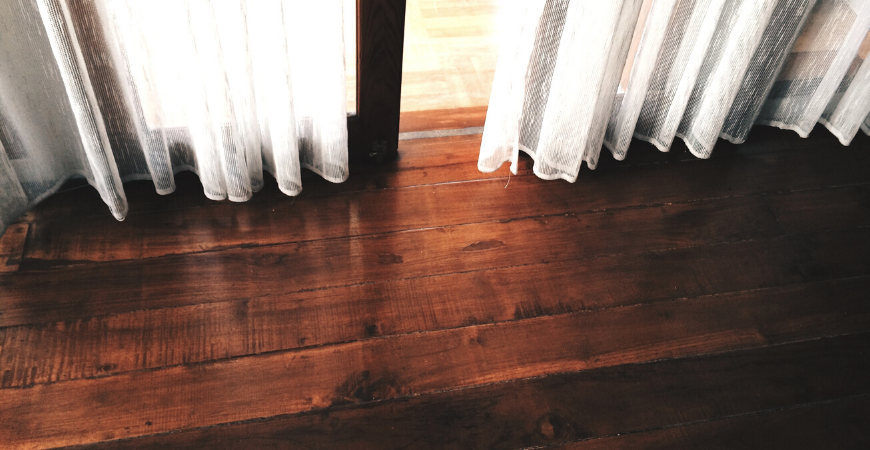
Here’s what you’ll need and what to do to fix squeaky floorboards
- Respirator with organic vapor cartridge
- Flashlight
- Pencil or marker
- Painter’s tape (optional)
- Construction adhesive
- Caulk and adhesive gun
- Fixing a squeaky floorboard is a job for two. Ask a friend to help!
Step 1
Ask a friend to walk over the troublesome area above while you watch the floorboards below. When you hear the noise, look for a gap in that approximate area. Mark the spot with a pencil, marker, or a piece of painter’s tape.
Step 2
Put on a respirator mask. If possible, open basement windows to let in air while you work. Construction adhesive should not be inhaled when used in enclosed areas because it is noxious.
Load a cartridge of construction adhesive into the caulk and adhesive gun.
Step 3
Force the construction adhesive deep into the gap by positioning the spout of the tube against the gap. Slowly press the trigger on the caulk gun to push the adhesive into the open space.
Move slowly until the gap is filled with adhesive, and the adhesive starts to create a bulge along the joist. As the bulge starts to form, continue to move along the gap to fill the next space until you’ve covered the length of the joist.
Step 4
Repeat Step 3 on both sides of the joists until the gap is filled. Inspect nearby joists as well to make sure the whole area is reinforced.
Step 5
Avoid walking on the floor for at least 24 hours to allow the adhesive to cure thoroughly. Then, you should have a squeak-free floor.
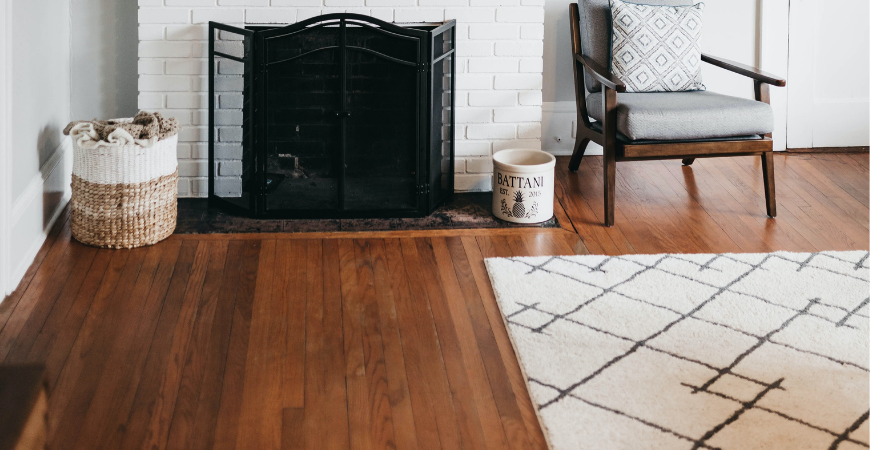
How to fix a squeaky floorboard that is under carpeting
Like with bare wood flooring, creaks under carpeting are caused by movement in the subfloor. If you have access to underneath the floor, the creaks under carpeting can be fixed with wood shims.
Here’s what you’ll need:
- Wood glue
- Wood shims
- Caulking gun
- Construction adhesive
Step 1
Spread wood glue on the narrow end of the shim. Insert the shim in the gap between the floor and the joists.
Step 2
Use a caulking gun and construction adhesive to run a bead of adhesive along both sides of joists. Although it’s time-intensive, it should stop creaks and squeaks and keep the subfloor from moving.
Step 3 (optional)
Equally important of an option is the Squeak-Ender. This product consists of a metal mounting plate that attaches to the bottom of the subfloor.
A threaded rod and bracket fit over the floor joist. Tightening the nut on the bracket closes the gap by pulling the subfloor snugly against the joist, eliminating the noise.
What if I can’t reach the underside of the subfloor?
According to home repair expert Danny Lipford, he’ll use “a gadget called ‘Squeeeeek No More’ which allows you to screw the subfloor down right through the carpet without removing it.” This toolkit prevents you from having to pull up your carpeting!
Why do my hardwood floorboards have gaps?
With older hardwood flooring, gaps will eventually show up between the boards. This is likely caused by one of the following:
- Wood naturally shrinks over time, drying out and losing moisture.
- The boards were not installed tightly enough.
- Water damage. The wood swelled when wet and then shrank as it dried.
- The floorboards were subjected to heat from below, such as a furnace room.
Gaps between hardwood floorboards are more than just unsightly. In addition, wide gaps can become tough-to-clean dirt magnets, so try and fill them in!
Even a tiny gap (1/4-inch or less) between the joists and subfloor can cause noises. One quick and easy fix is filling the narrow gaps with construction adhesion, a pliable filler that can close gaps and stop the creaking.
How to fill floorboard gaps with wood putty
Filling gaps with wood putty works well on small, stable gaps, and the job is quick and easy to do. Here’s what you’ll need and the steps to do so:
- Wood putty
- Cloth
- Putty knife
Step 1
Thoroughly clean the floorboards on both sides of the gap with a slightly dampened cloth. Furthermore, choose a putty color that matches the floorboard color, if possible.
Step 2
Apply a small bead of wood putty to the gap. Work the putty into the gap with your finger, using circular motions.
Then carefully remove the excess putty with a putty knife and avoid scratching the finish.
Step 3
Allow the putty to set up, then wipe along the filled gap with a damp cloth to remove residue from the floorboards. Do not remove the putty from the gap and avoid stepping in the areas that you applied putty to so it can dry properly.
Whether it’s a squeak or a gap, floorboard issues are as easy to fix as grabbing a midnight snack!
If you’ve tried one of these methods in the past or are planning on fixing your squeaky floorboards, let us know your tips and tricks for making the process simpler in the comments below!



